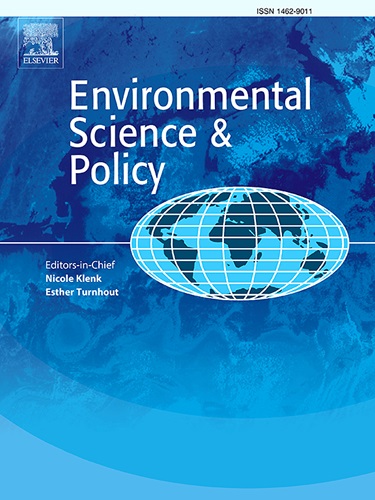气候大会与公众:英国案例分析
IF 5.2
2区 环境科学与生态学
Q1 ENVIRONMENTAL SCIENCES
引用次数: 0
摘要
气候大会(CAs)越来越多地用于让公民参与气候变化政策制定。因此,它们的设计和运作侧重于优化它们对政策制定者的影响。对核证机关如何以及在多大程度上影响更广泛的公众的强调较少。这是一个重要的差距,因为有人认为,CAs可以激发公众对气候变化行动和态度的思考。公众的支持也可能增加决策者的压力,迫使他们按照大会的建议采取行动。鉴于核证机关的参与者通常很少,因此,如果获得更广泛的公众支持,实施他们的建议就更合理。迄今为止的研究主要集中在一般的公民集会上,而不是具体的公民大会。鉴于气候问题的复杂性和重要性,这一差距需要解决。此外,现有的许多研究都是基于假设结果的实验。因此,研究重点放在引人注目的自然案例上是必不可少的。为了填补这些空白,我们通过对英国气候大会和苏格兰气候大会的分析来评估CAs与公众之间的关系。这是第一批国家级ca中的两个,吸引了媒体的报道。我们对这两件事都进行了民意调查。我们发现公众对这两种CAs的认知度都很低。尽管如此,CAs对气候政策做出贡献的想法得到了英国和苏格兰公众的广泛支持,甚至一些不关心气候变化的人也支持。本文章由计算机程序翻译,如有差异,请以英文原文为准。
Climate assemblies and the public: An analysis of UK cases
Climate assemblies (CAs) are being increasingly used to engage citizens in climate change policy making. Consequently, their design and operation are focused on optimising their influence on policymakers. Less emphasis is placed on how, and to what extent, CAs influence the wider public. This is an important gap as it has been suggested that CAs could stimulate public deliberation about climate change action and attitudes. Public support could also increase pressure on decision-makers to act on an assembly’s recommendations. Given the small numbers of participants typically found in CAs, implementation of their recommendations is more legitimate if broader public support is secured. Research to date has focused on citizens’ assemblies generally, rather than CAs specifically. Given the complexity and importance of the climate issue this gap needs to be addressed. Moreover, much of the existing research is based on experiments with hypothetical results. Research focused on high profile natural cases is therefore essential. To fill these gaps, we assess the relationship between CAs and the public through an analysis of Climate Assembly UK and Scotland’s Climate Assembly. These are two of the first national CAs and attracted media coverage. We conducted public opinion surveys on both cases. We find that public awareness of both CAs was low. Despite this, the idea of CAs contributing to climate policy is broadly supported by the UK and Scottish publics even by some people not concerned about climate change.
求助全文
通过发布文献求助,成功后即可免费获取论文全文。
去求助
来源期刊

Environmental Science & Policy
环境科学-环境科学
CiteScore
10.90
自引率
8.30%
发文量
332
审稿时长
68 days
期刊介绍:
Environmental Science & Policy promotes communication among government, business and industry, academia, and non-governmental organisations who are instrumental in the solution of environmental problems. It also seeks to advance interdisciplinary research of policy relevance on environmental issues such as climate change, biodiversity, environmental pollution and wastes, renewable and non-renewable natural resources, sustainability, and the interactions among these issues. The journal emphasises the linkages between these environmental issues and social and economic issues such as production, transport, consumption, growth, demographic changes, well-being, and health. However, the subject coverage will not be restricted to these issues and the introduction of new dimensions will be encouraged.
 求助内容:
求助内容: 应助结果提醒方式:
应助结果提醒方式:


